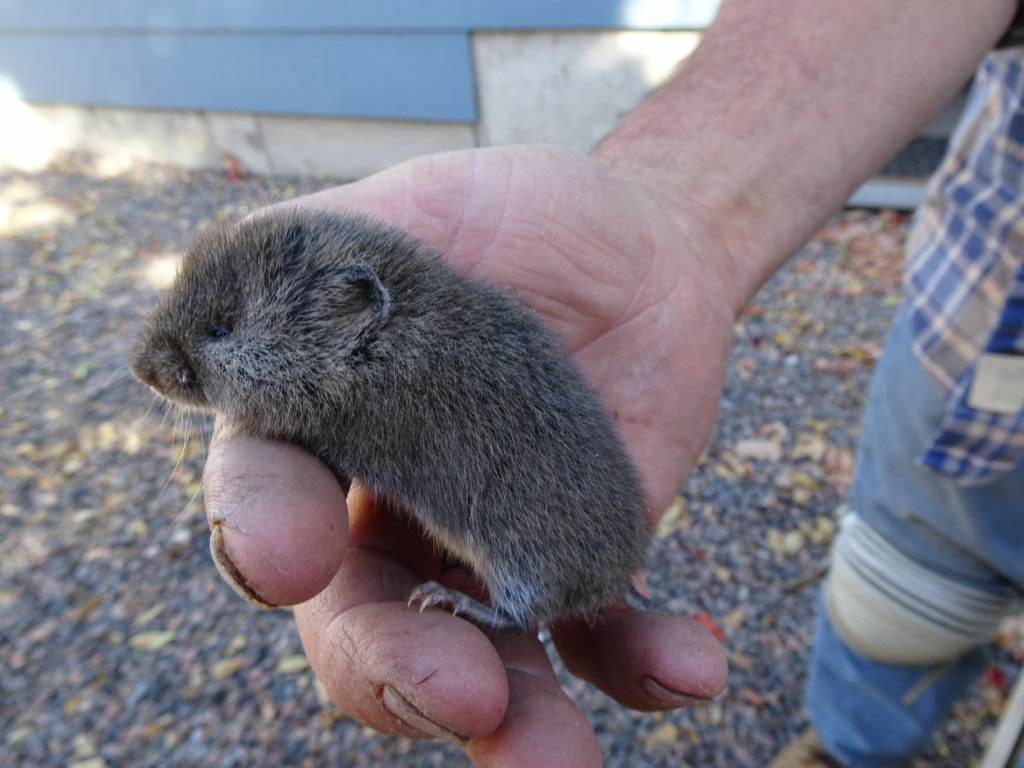Relied On Vole Control in Utah: Solutions for Your Property
Relied On Vole Control in Utah: Solutions for Your Property
Blog Article
Understanding Vole Parasite Control: Comprehensive Insights on Infestation Avoidance and Therapy Approaches
By recognizing the refined indications of vole problem early on, we can take positive measures to protect against extensive damages. In this conversation, we will explore the subtleties of vole behavior, dive into the recognition of infestation indications, and uncover the most reliable prevention and therapy methods.
Understanding Vole Habits
Examining the foraging patterns of voles provides beneficial insights into their habits and environment choices. By observing their foraging behavior, researchers can get a far better understanding of where voles prefer to establish their habitats and the degree of their ecological influence.
Research indicates that voles display careful feeding routines, favoring origins, tubers, and seeds. This dietary preference affects their foraging patterns, leading them to locations abundant in vegetation and ground cover. Additionally, voles are known to create fancy tunnel systems for foraging and nesting purposes, indicating a high level of adaptability to their surroundings.
Comprehending vole behavior is important for implementing targeted parasite control actions that disrupt their environment preferences and foraging activities (vole control). By researching their habits, experts can create a lot more efficient avoidance and therapy methods to handle vole infestations

Identifying Indicators of Vole Invasion
Vole infestations can be identified by acknowledging specific signs of their presence in an area. One of the most usual signs of a vole invasion is the visibility of surface paths.
One more key sign of vole problem is the presence of little burrow openings in the ground. In addition, voles are known to leave behind chewed plant stems, roots, and light bulbs near their burrow openings, showing their feeding task in the area.
Moreover, vole droppings can additionally signify their visibility. Vole droppings are little, brownish, and round fit, looking like grains of rice. Discovering these droppings along runways or near burrow openings can verify a vole problem. By being watchful for these indications, homeowner can promptly address vole invasions and avoid additional damage.
Carrying Out Positive Prevention Steps

Furthermore, employing all-natural vole deterrents like castor oil-based repellents or killer pee can serve as reliable precautionary actions. It is additionally recommended to routinely evaluate outdoor rooms for any kind of indications of vole task, such as runways or burrow openings, to attend to prospective invasions immediately. vole pest control. By embracing these aggressive avoidance techniques, homeowner can substantially reduce the possibility of vole damages and maintain the health and visual appeals of their landscapes
Efficient Therapy Methods
Including targeted capturing approaches and making use of approved rodenticides are important elements of efficient therapy approaches for taking care of vole problems. Capturing can be a reliable means to lower vole populaces, specifically when positioned purposefully in their energetic runways. Snap traps and live catches can both be reliable, with the latter allowing for the capture and relocation of voles. When using rodenticides, it is important to follow safety guidelines to stop injury to non-target pets and family pets. Location rodenticides in protected bait stations to minimize threats to unplanned targets. Furthermore, habitat modification, such as reducing ground cover and removing resources of food, can help deter voles from infesting a location. Routine monitoring and upkeep are additionally crucial elements of successful therapy techniques to ensure that vole populaces are kept under control. By combining capturing, rodenticides, habitat alteration, and constant monitoring, reliable vole bug control can be achieved.
Tracking and Upkeep Tips
Routine tracking enables for the very early discovery of vole task, making it possible for punctual treatment prior to problems get worse. To effectively monitor vole populations, strategically placed traps can be made use of in vole paths or near burrow entrances.
Additionally, keeping a tidy and clean landscape is crucial in vole avoidance. Cleaning away look here debris, such as stacks of wood or dense vegetation, removes possible vole environments. Regularly trimming and mowing grass plant life helps in reducing vole hiding spots and decreases their accessibility to food sources.
Furthermore, ongoing maintenance of physical obstacles, such as fencings or wire mesh, is essential to protect against vole breach. Evaluating and repairing any problems to these frameworks guarantees that vole control remains useful source reliable in securing residential or commercial properties from infestations. By including these monitoring and upkeep methods into a detailed vole insect control strategy, individuals can effectively handle vole populations and shield their homes from damage.
Verdict
In final thought, understanding vole bug control requires a strong understanding of vole habits, the ability to determine indicators of invasion, implementing positive avoidance steps, reliable therapy methods, and regular tracking and upkeep. By taking a comprehensive technique to vole control, people can efficiently take care of and prevent invasions, inevitably safeguarding their residential or commercial property and bordering setting from damage brought on by these small rodents.
In this conversation, we will certainly explore the nuances of vole habits, dive right into the identification of invasion signs, and reveal the most efficient prevention and treatment methods.Including targeted trapping techniques and using accepted rodenticides are essential components of efficient therapy methods for taking care of vole infestations. To effectively keep track of vole populations, tactically put traps can be used in vole paths or near burrow entries. Inspecting and repairing more information any damages to these structures guarantees that vole control stays efficient in securing properties from infestations. By including these surveillance and upkeep techniques right into a thorough vole bug control strategy, individuals can successfully handle vole populations and safeguard their homes from damage.
Report this page